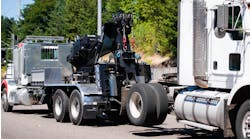For most fleets, downtime is a four-letter word. They want to avoid it at all costs and while there is no way to eliminate 100% of it, you can reduce the chances of it happening.
Avoiding downtime starts before the truck ever hits the road. It actually begins in the specification process. Before you order your next truck, review your current operation. Have there been changes in the types of loads you carry and the routes you travel? If so, the way your trucks currently are spec’d may no longer fit the way your trucks actually are operating. You may have to adjust specs to meet your new reality.
You also should spend time reviewing the service histories of your current trucks. Look for component failure trends to see which components are not giving you the durability you need. At the same time, look into new products that have come on the market since the last time you ordered trucks. You may find that some of the newer products will work well in your operation.
It is important to do a complete spec review prior to ordering a new truck. Get your truck supplier’s insight into what components and systems have shown longevity in operations similar to yours.
Once you have a properly spec’d truck, it needs to be maintained properly throughout its life. Use the manufacturer’s published maintenance schedules as a starting point. Tweak schedules as needed for your operation but never exceed the intervals recommended by the OEM. Seeing the truck more often might make sense for you; seeing it less often than recommended could not only cause more downtime but could also void the warranty.
Track all maintenance and service events. Look at data that falls outside normal parameters. Remember the ultimate goal is to PM a truck and never see it in the shop again until it is time for the next scheduled PM service. If you track service events between PMs, you’ll get good guidance on when it makes sense to retire an asset.
Reducing downtime starts with the right specs, followed by the right amount of maintenance, using the information you have at hand to make the right asset retirement decision. It’s as simple as that.


